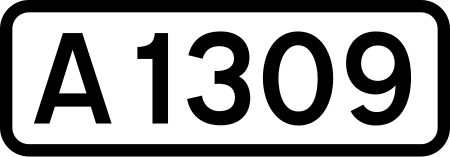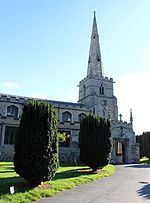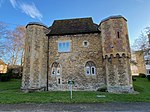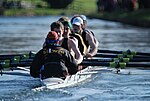A1309 road

The A1309 is a short road (1.9 miles) which links the two ends of the A10 to north and south of Cambridge city centre in Cambridgeshire, England. It was numbered as part of the A10 prior to the construction of the Cambridge Western Bypass (now M11) and the Northern Bypass (originally A45, now A14).Its northern end is at the Milton Interchange with the A14 and A10. From here, it passes the Cambridge Science Park, the Cambridge Business Park, and the Cowley Road Park & Ride site, as Milton Road on its way to the Mitchams Corner gyratory complex just to the north of the city centre. It is unmarked through the city centre, but reappears to the south on the route of the A1134 ring road named Trumpington Road which then becomes Trumpington High Street. In Trumpington, it has a junction with the A1301 and then passes the Trumpington Park & Ride site before its southern end at junction 11 of the M11 motorway and the A10.
Excerpt from the Wikipedia article A1309 road (License: CC BY-SA 3.0, Authors, Images).A1309 road
Milton Road, Cambridge Chesterton
Geographical coordinates (GPS) Address Nearby Places Show on map
Geographical coordinates (GPS)
| Latitude | Longitude |
|---|---|
| N 52.22387 ° | E 0.13917 ° |
Address
Milton Road 298
CB4 1LH Cambridge, Chesterton
England, United Kingdom
Open on Google Maps










